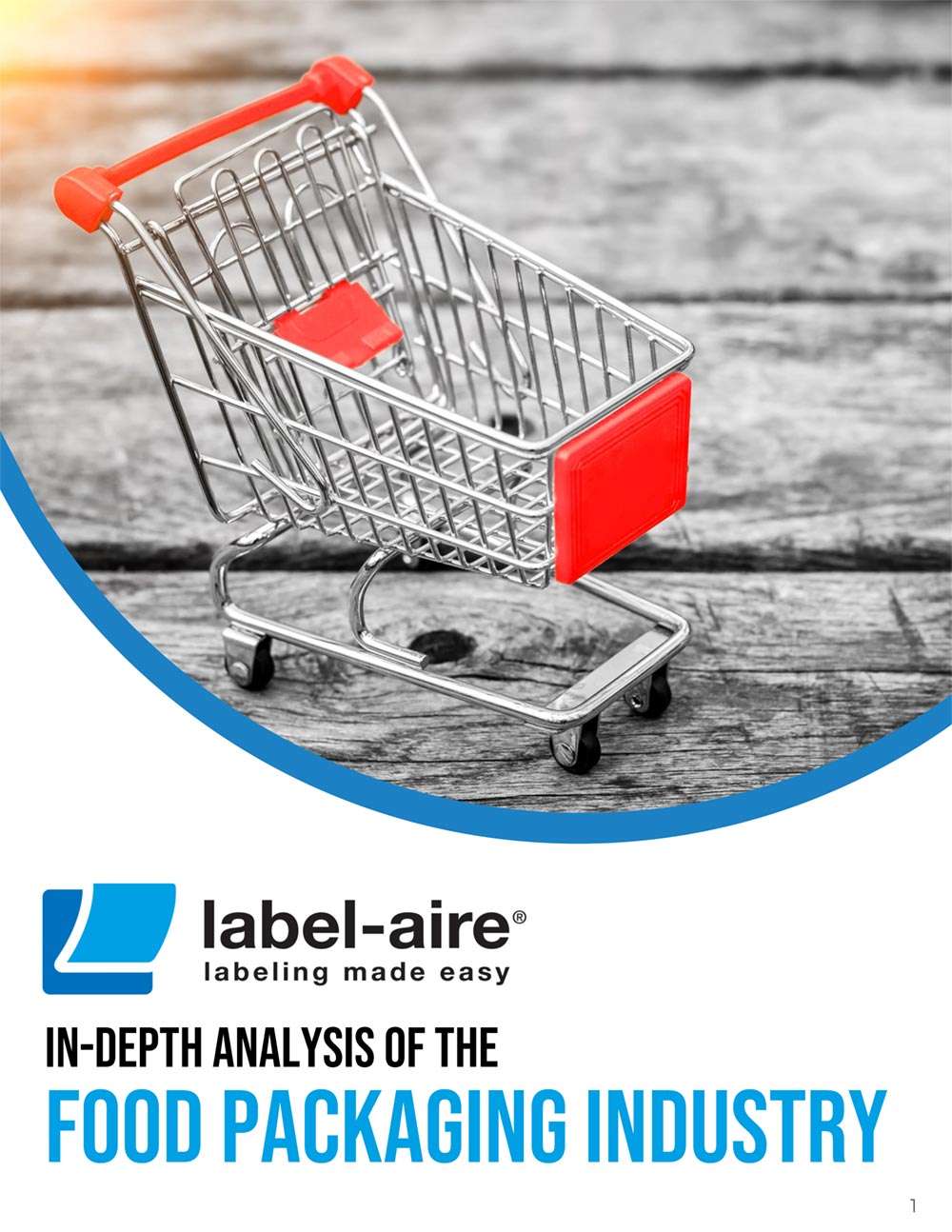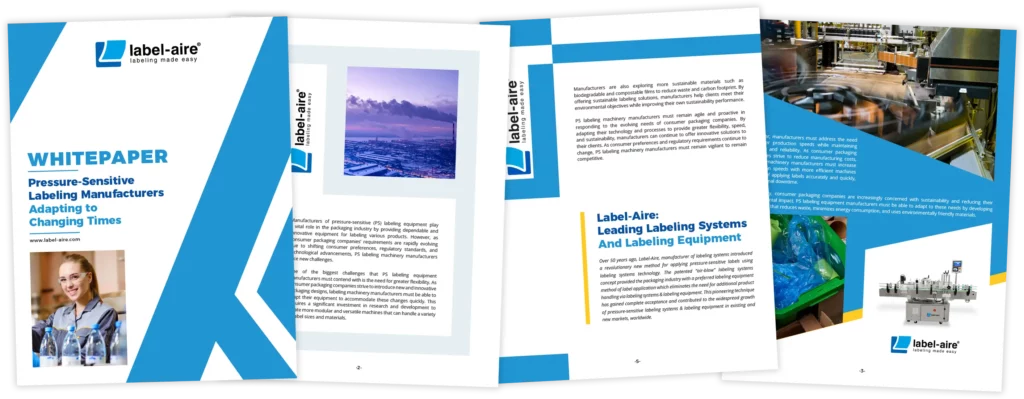Executive Summary
- The food packaging industry is essential to maintaining the global food supply chain’s integrity, safety, and efficiency.
- As it stands, the sector is undergoing rapid transformations due to evolving consumer expectations, technological innovations, and growing environmental concerns.
- These dynamics present both significant challenges and opportunities for growth and innovation, particularly in sustainable practices.
- This white paper provides a detailed examination of these trends, highlighting the current landscape, emerging challenges, and potential future developments within the industry.
Introduction
Food packaging fulfills crucial roles from farm to table, including protection against contamination, shelf life extension, and consumer information delivery. However, the changing landscape—marked by increased consumer awareness and stricter regulatory demands—necessitates significant adaptation within the industry. Innovations aimed at enhancing sustainability, convenience, and safety are becoming increasingly critical. This white paper delves deep into these pressing issues, backed by industry examples and expert insights, to paint a comprehensive picture of the sector’s ongoing evolution.
Current Landscape
- The diversity within the global food packaging market is vast, spanning various materials like plastics, glass, metals, and paper-based solutions.
- Industry growth is propelled by factors such as the growing global population, heightened consumer expenditure, and the surge in demand for convenience foods.
- Industry leaders like Tetra Pak and Amcor are at the forefront, introducing innovative packaging solutions that address consumer demands for functionality
Market Dynamics
The market is witnessing a definitive shift towards packaging solutions that are convenient, eco-friendly, and visually appealing, especially with the rise of online shopping. This shift is pushing companies towards innovative materials and designs. Moreover, regulatory pressures aiming at waste reduction and enhanced recyclability are shaping market dynamics, as seen with the strict packaging regulations implemented by the European Union.
Technological Advancements
Technological breakthroughs are pivotal in reshaping food packaging, with a focus on prolonging shelf life, bolstering food safety, and minimizing environmental footprints. Active and intelligent packaging technologies are leading this wave, as evidenced by companies like Freshpoint and PakSense, which have introduced smart labels capable of monitoring the freshness of food, thus bolstering consumer confidence
Sustainability Challenges
Sustainability represents the industry’s most daunting challenge, primarily due to the detrimental environmental impacts associated with single-use plastics and non-recyclable materials. However, innovations like bioplastics, exemplified by NatureWorks’ Ingeo biopolymer, offer a greener alternative for various packaging applications, presentin
Regulartory and Compliance Pressures
The labyrinth of global regulations regarding food safety and environmental sustainability presents a formidable challenge to manufacturers. Adhering to standards like the FDA’s FSMA (Food Safety Modernization Act) while managing costs necessitates a delicate balance, requiring constant innovation and adaptability.
Consumer Trends and Expectations
- Modern consumers are demanding more from their food packaging: convenience, safety, transparency, and sustainability.
- This shift mandates significant innovation in packaging designs and materials to align with consumer values.
- The rise of brands like Loop, which provides reusable packaging solutions, underscores the market’s growing demand for sustainable packaging options.
Future Directions
Sustainable Packaging Innovations
Future developments are likely to emphasize sustainable packaging solutions, focusing on the entire lifecycle from material sourcing to disposal. The industry is exploring biodegradable, compostable alternatives and seeking to enhance recycling processes. Notpla’s introduction of edible packaging options represents the innovative strides being made towards sustainability.
Smart Packaging Solutions
The advent of intelligent packaging, featuring QR codes, RFID tags, and sensors, is poised to
revolutionize the industry, improving supply chain transparency, minimizing waste, and
elevating consumer engagement. Thinfilm’s NFC tags demonstrate how consumers can
interact with packaging to access detailed product information and traceability data.
Supply Chain Integration
Streamlined supply chain management is crucial for aligning with consumer expectations and meeting regulatory standards. Integrating advanced tracking and logistics technologies can lead to more efficient operations, cost reductions, and better environmental performance. Blockchain, for example, provides a promising means to ensure greater transparency and traceability within the food packaging supply chain.
Regulatory Trend and Global Standards
Keeping pace with evolving global regulations remains a continuous challenge for the industry. Staying ahead of legislative changes, like the EU’s Circular Economy Action Plan, is critical for international compliance and market access. A collaborative approach among governments, industries, and stakeholders is essential for establishing harmonized standards that facilitate innovation and trade.
Strategic Recommendations
Embrace Sustainability
Prioritize the development of sustainable packaging materials and designs to align with regulatory standards and consumer expectations.
Adopt Smart Technologies
Implement intelligent packaging solutions to enhance product safety, reduce waste, and foster consumer engagement.
Collaborate Across the Supply Chain
Foster partnerships with suppliers, distributors, and retailers to enhance operational efficiency, decrease costs, and ensure transparency.
Stay Ahead of Regulations
Continuously monitor and adapt to evolving global regulations to ensure compliance and capitalize on new market opportunities.
Understand Consumer Preferences
Regularly conduct market research and solicit consumer feedback to inform packaging design and innovation strategies.
Conclusion
The food packaging industry is navigating a complex landscape marked by sustainability concerns, evolving consumer expectations, and regulatory pressures. However, these challenges also provide opportunities for significant innovation and growth. By committing to sustainable materials, leveraging smart technologies, and fostering collaboration across the supply chain, companies can address current market demands and prepare for future developments. The industry’s future will be shaped by a commitment to innovation, sustainability, and consumer engagement, ensuring the long- term success and resilience of the food packaging sector. This white paper has highlighted the pivotal aspects, challenges, and future directions of the food packaging industry, offering a detailed guide for stakeholders navigating this evolving landscape. By understanding and addressing these critical dynamics, companies can make informed decisions, driving innovation and sustainability in their packaging solutions.
Label-Aire: Leading Labeling Systems And Labeling Equipment
Over 50 years ago, Label-Aire, manufacturer of labeling systems introduced a revolutionary new method for applying pressure-sensitive labels using labeling systems technology. The patented “air-blow” labeling systems concept provided the packaging industry with a preferred labeling equipment method of label application which eliminates the need for additional product handling via labeling systems & labeling equipment. This pioneering technique has gained complete acceptance and contributed to the widespread growth of pressure-sensitive labeling systems & labeling equipment in existing and new markets, worldwide.



